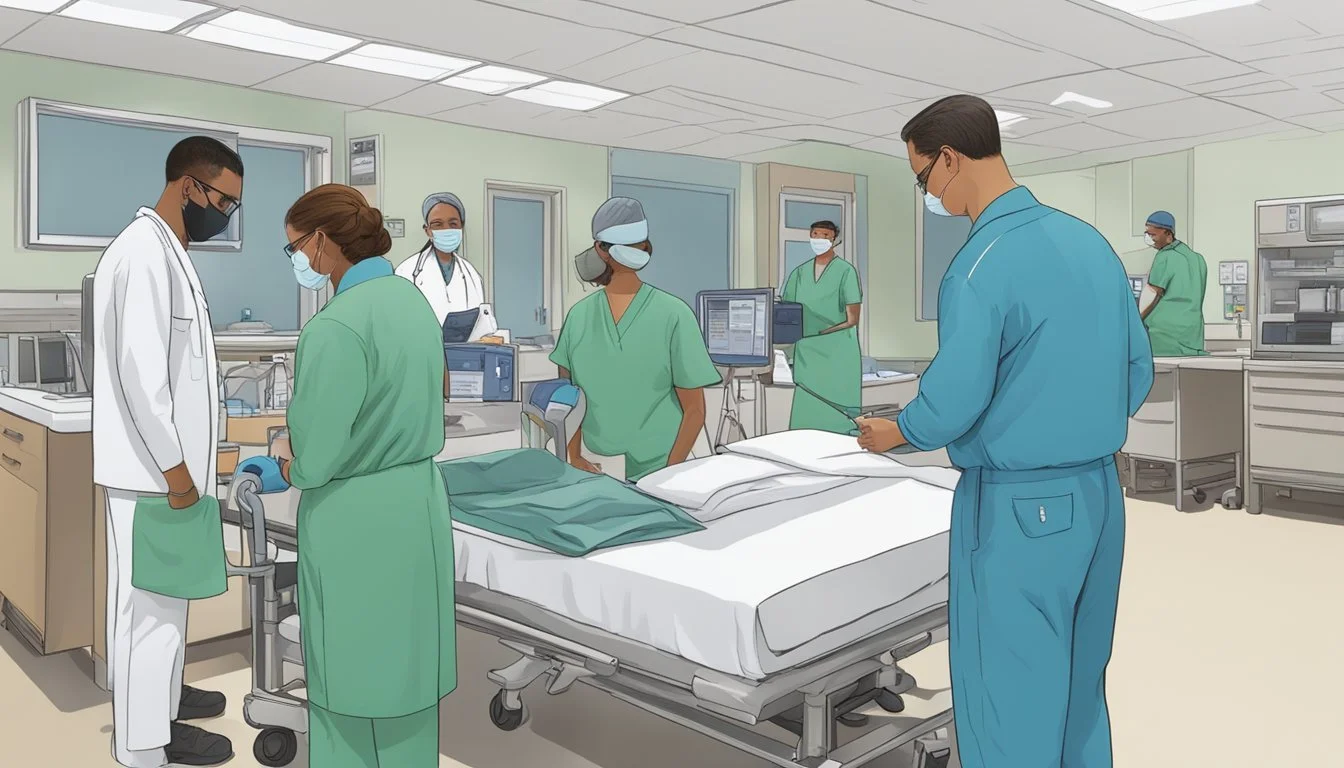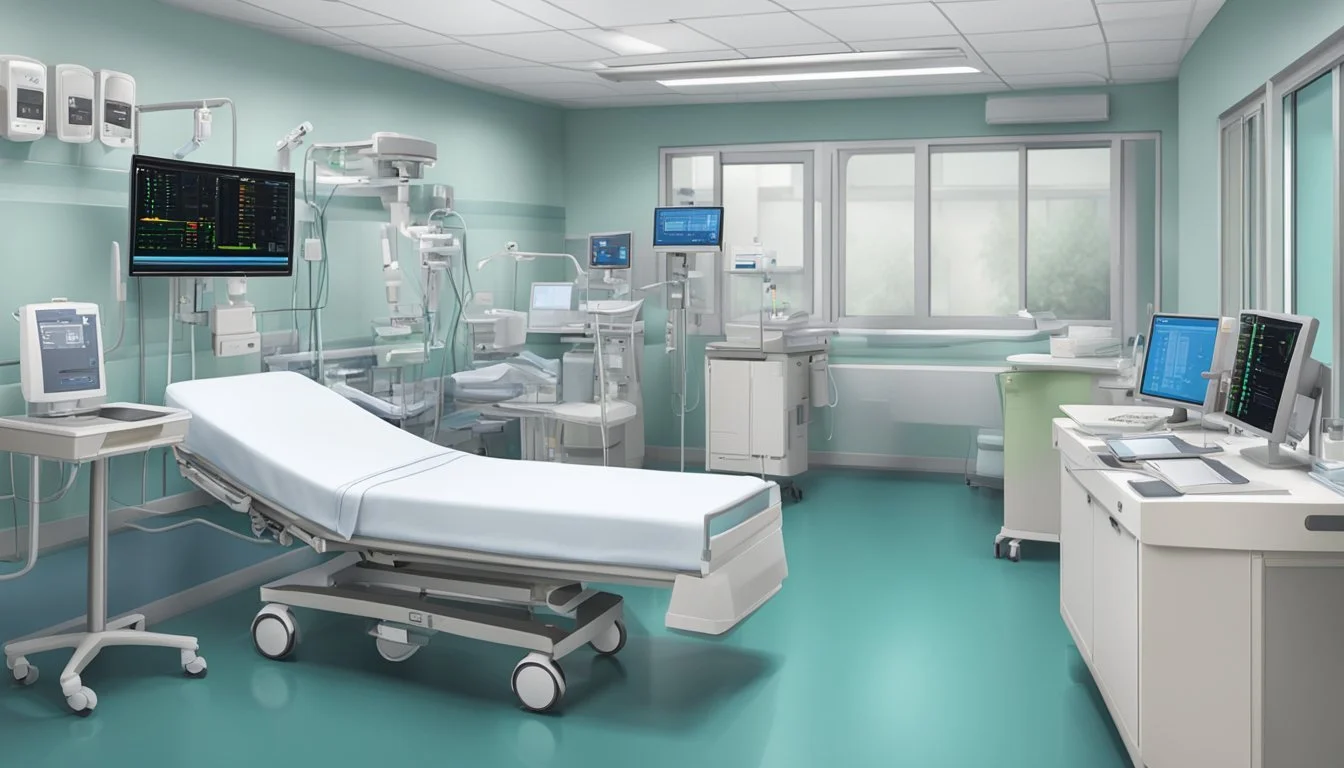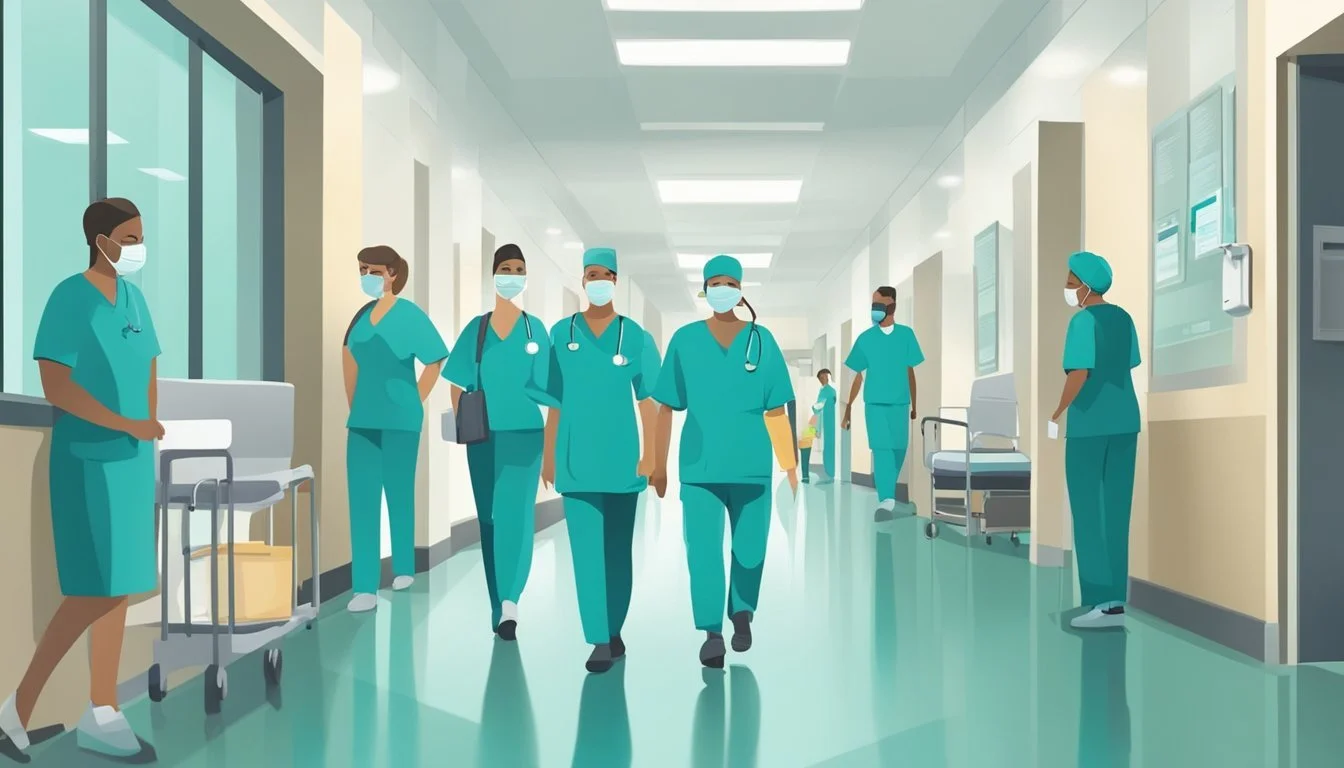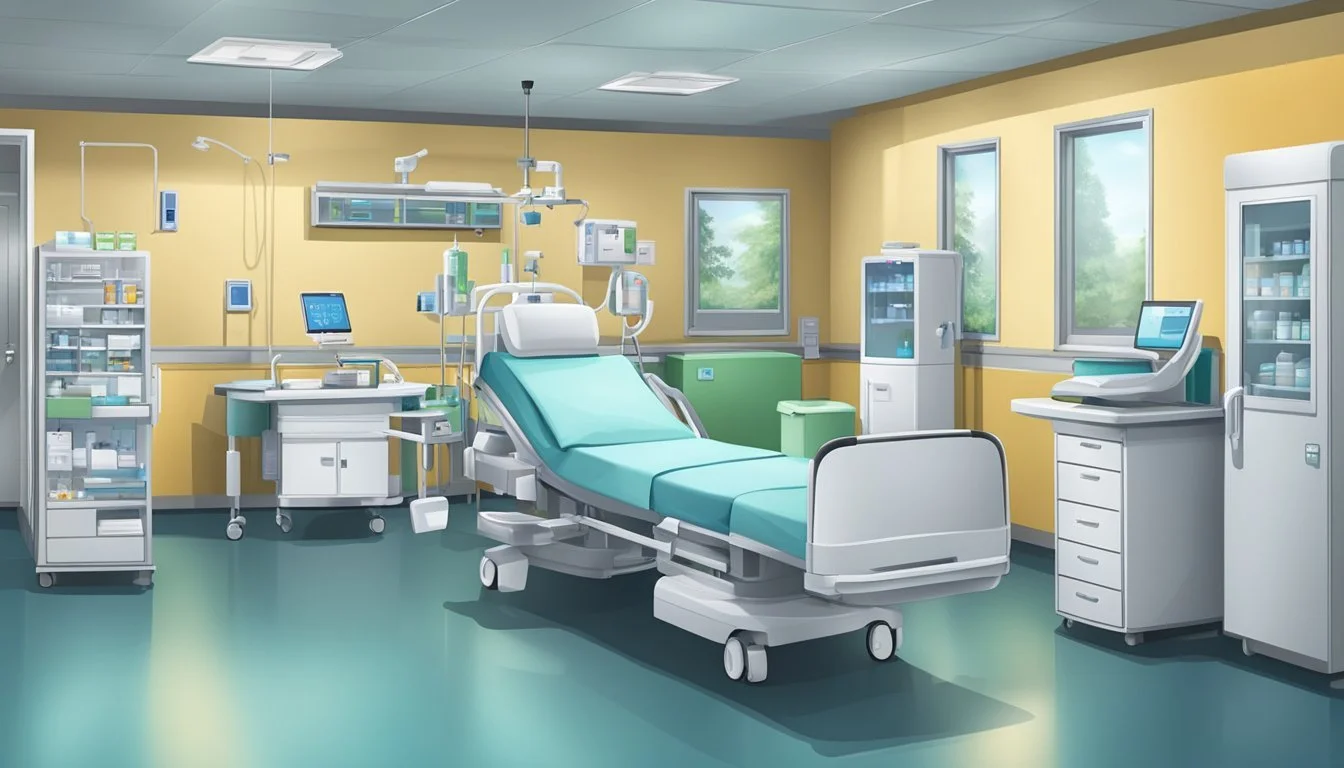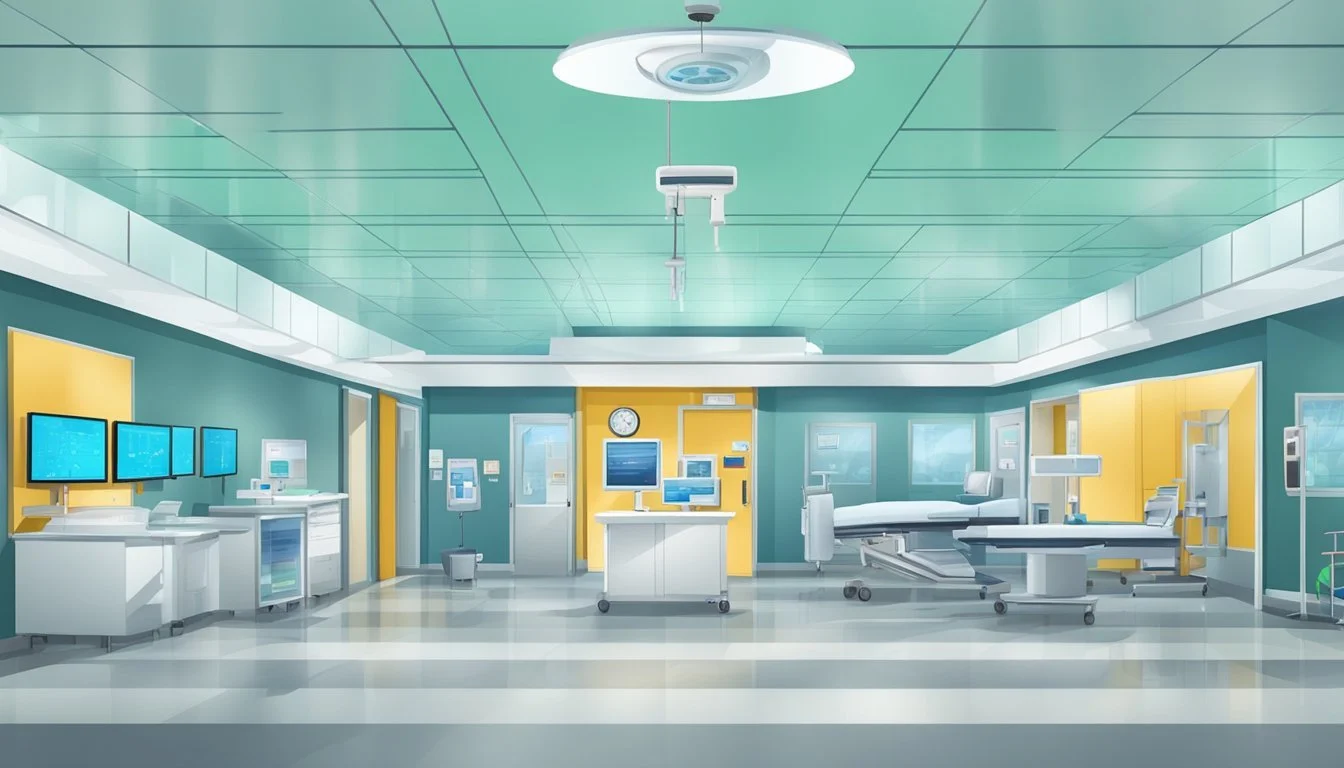Orville Lynn Majors: 6 Hospital Protocols Revamped
Lessons from the Angel of Death Case
Orville Lynn Majors, a licensed practical nurse, gained notoriety as the "Angel of Death" for his involvement in multiple patient deaths at an Indiana hospital. His actions shocked the medical community and exposed significant vulnerabilities in healthcare systems.
The capture and conviction of Majors led to a comprehensive review of hospital protocols across the United States. This examination resulted in six key changes aimed at enhancing patient safety and preventing similar incidents in the future. These revisions addressed various aspects of healthcare operations, from medication management to staff oversight.
1) Enhanced Patient Monitoring Systems
Following the Orville Lynn Majors case, hospitals implemented more robust patient monitoring systems. These systems track vital signs and medication administration in real-time.
Staff members now log each interaction with patients, creating a detailed record of care. This includes documenting medication doses, times, and the personnel involved in administration.
Advanced software alerts medical professionals to any sudden changes in patient conditions. It also flags unusual patterns in medication use or patient decline.
Surveillance cameras were installed in critical areas to deter potential misconduct. These cameras provide visual records of staff activities and patient care.
Electronic tracking of controlled substances became standard practice. This system monitors drug inventory and usage, making it easier to detect any discrepancies.
Regular audits of patient care records and medication logs are now conducted. These reviews help identify any irregularities or deviations from established protocols.
These enhanced monitoring systems create a more transparent and accountable healthcare environment. They serve as both a deterrent to potential misconduct and a tool for ensuring patient safety.
2) Stricter Staff Background Checks
The capture of Orville Lynn Majors led to significant changes in hospital hiring practices. Healthcare facilities implemented more rigorous background checks for all staff members, especially those in patient-facing roles.
These enhanced screenings now include comprehensive criminal history searches at local, state, and federal levels. Hospitals also began verifying educational credentials and professional licenses more thoroughly.
Employment history verification became more extensive, with facilities contacting multiple previous employers. Reference checks became more detailed, focusing on job performance and any concerning behaviors.
Some hospitals introduced psychological evaluations for certain positions. These assessments aim to identify potential red flags in an applicant's personality or behavior.
Drug testing protocols were also strengthened in many facilities. Regular, random screenings became more common to ensure ongoing compliance with substance abuse policies.
These stricter background checks aim to prevent individuals with questionable histories from gaining access to vulnerable patients. The goal is to create a safer healthcare environment and restore public trust in medical institutions.
3) Mandatory Mental Health Evaluations
Healthcare facilities implemented regular mental health assessments for all staff members after the Orville Lynn Majors case. These evaluations aimed to identify potential psychological issues that could impact patient care.
Hospitals now require employees to undergo initial screenings before starting work. Follow-up assessments are conducted periodically throughout their employment. These evaluations help detect signs of stress, burnout, or other mental health concerns.
Mental health professionals conduct these assessments using standardized tools and interviews. They look for red flags such as mood changes, substance abuse, or unusual behavior patterns. Early intervention is crucial to prevent potential harm to patients.
Staff members who exhibit concerning signs receive additional support and resources. This may include counseling, stress management training, or temporary reassignment of duties. The goal is to ensure all healthcare workers are mentally fit to provide safe and effective care.
These mandatory evaluations have become an integral part of hospital safety protocols. They help maintain a psychologically healthy workforce and protect vulnerable patients from potential harm.
4) Advanced Medication Safety Protocols
The capture of Orville Lynn Majors prompted hospitals to implement stricter medication safety protocols. Many facilities adopted electronic medication administration records (eMAR) to track drug dispensing and administration.
Barcode scanning systems were introduced to verify patient identity and medication accuracy before administration. This technology helps prevent errors by ensuring the right patient receives the correct medication and dosage.
Hospitals also implemented dual verification processes for high-risk medications. Two nurses must independently check and confirm dosages for certain drugs, reducing the risk of calculation errors or intentional misuse.
Automated medication dispensing cabinets became more widespread. These secure storage units require staff authentication and record all access, creating an audit trail for medication retrieval.
Pharmacies enhanced their role in medication safety by reviewing all medication orders before dispensing. Clinical pharmacists began conducting regular medication audits and collaborating more closely with nursing staff.
Hospitals increased training on proper medication handling and administration procedures. Staff received education on recognizing signs of drug diversion and reporting suspicious behavior.
These advanced protocols aim to prevent both accidental errors and deliberate misuse of medications in healthcare settings.
5) Increased Security Surveillance
The capture of Orville Lynn Majors prompted hospitals to reevaluate their security measures. Many facilities implemented enhanced surveillance systems to monitor staff activities more closely.
Hospitals installed additional security cameras in patient rooms, hallways, and medication storage areas. These cameras provided continuous footage, allowing administrators to review any suspicious behavior.
Access control systems were upgraded to track staff movements throughout the facility. Electronic key cards and biometric scanners became more common, restricting unauthorized entry to sensitive areas.
Medication dispensing systems received security enhancements. Many hospitals implemented two-person verification protocols for accessing and administering controlled substances.
Real-time monitoring of patient vital signs became more widespread. Automated alerts notified staff of sudden changes, reducing the potential for undetected harm.
Hospitals also increased the presence of security personnel. Regular patrols and strategically placed security stations helped deter potential wrongdoing and provided a quick response to emergencies.
These enhanced security measures aimed to create a safer environment for patients and staff while deterring potential misconduct.
6) Comprehensive Staff Training Programs
The capture of Orville Lynn Majors prompted hospitals to overhaul their staff training programs. Many institutions implemented more rigorous and frequent training sessions for all employees.
These programs focused on patient safety protocols, medication administration procedures, and ethical decision-making. Staff members were educated on recognizing signs of potential abuse or misconduct among colleagues.
Hospitals introduced mandatory reporting systems, encouraging employees to voice concerns about suspicious behavior. Regular workshops on professional boundaries and appropriate patient interactions became standard practice.
Training also emphasized the importance of thorough documentation and proper chain of custody for medications. Staff learned to closely monitor patient vital signs and report any unexpected changes promptly.
Simulation exercises were incorporated to prepare staff for various emergency scenarios. These drills helped improve response times and coordination during critical situations.
Hospitals also implemented ongoing education programs to keep staff updated on the latest healthcare practices and technologies. Regular competency assessments ensured that all employees maintained high standards of care.
Background of Orville Lynn Majors
Orville Lynn Majors, a licensed practical nurse, gained notoriety for his involvement in patient deaths at an Indiana hospital. His actions led to multiple murder convictions and a lengthy prison sentence.
Early Life and Career
Orville Lynn Majors was born on April 24, 1961. He pursued a career in nursing, becoming a licensed practical nurse. Majors worked at Vermillion County Hospital in Clinton, Indiana, where he was employed from 1993 to 1995.
During his time at the hospital, Majors developed a reputation for his tender touch with patients. Colleagues and patients' families often praised his seemingly compassionate demeanor.
Infamous Acts and Charges
Between 1993 and 1995, a suspicious spike in patient deaths occurred at Vermillion County Hospital. Investigations revealed that Majors had been injecting patients with heart-stopping drugs.
Majors was eventually charged with multiple murders. In 1999, he stood trial for seven counts of murder. The prosecution presented testimony from 79 witnesses, including 23 doctors.
The jury found Majors guilty on six counts of murder. In November 1999, he received a 360-year prison sentence - 60 years for each murder conviction. While officially convicted of six murders, authorities suspected Majors might have been responsible for additional deaths during his employment at the hospital.
Hospital Protocols Revamped
The capture of Orville Lynn Majors led to significant changes in hospital procedures. These reforms aimed to prevent similar incidents and enhance patient safety.
Enhanced Patient Monitoring
Hospitals implemented more rigorous patient monitoring systems. Nurses now record vital signs more frequently, especially for high-risk patients. Electronic health records track medication administration in real-time.
New alert systems notify staff of sudden changes in patient condition. This allows for quicker responses to potential emergencies.
Hospitals also increased staffing levels in critical care units. More eyes on patients reduce the chances of unnoticed adverse events.
Stricter Employee Background Checks
Healthcare facilities tightened their hiring processes. Applicants now undergo more thorough background checks, including criminal history and professional license verification.
References are scrutinized more carefully. Employers contact previous workplaces to inquire about any concerning behavior or incidents.
Periodic re-checks of current employees became standard practice. This helps identify any new issues that may arise after initial hiring.
Implementation of Surveillance Technologies
Many hospitals installed security cameras in medication rooms and patient care areas. These systems deter potential wrongdoing and provide evidence if needed.
Electronic medication tracking systems were introduced. These track who accesses medications, when, and in what quantities.
Biometric access control for medication dispensing cabinets became common. This ensures only authorized personnel can access potentially dangerous drugs.
Some facilities implemented random drug testing for staff members. This helps identify substance abuse issues that could impact patient care.

